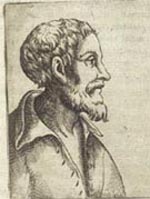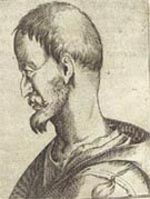
The History of Physiognomy
A Leverhulme Trust International Network
Queen Mary University of London (London), Ecole Normale Supérieure (Paris), and Scuola Normale Superiore (Pisa)

 |
The History of PhysiognomyA Leverhulme Trust International NetworkQueen Mary University of London (London), Ecole Normale Supérieure (Paris), and Scuola Normale Superiore (Pisa) |
 |
|
HomeAbout the NetworkAbout PhysiognomyContactMembersParticipantsEventsBibliographyResources/Links |
About the Network
The aim of the network is to explore physiognomy – broadly speaking, the arts and sciences of the human face - as a kind of epistemological crossroads which brings into contact, and explores affinities between, related bodies of knowledge and forms of creativity across the humanities, and the social and biological sciences. We believe that this is an appropriate move at the present time. The field is in an exciting state of flux, though a comprehensive treatment of physiognomy per se seems premature. The network aims to focus initially on a closely defined (though still extensive) time-period, from c. 1500 to c. 1850. Within this time-span, we have identified three ‘moments’, each of which will be the theme of an international and interdisciplinary workshop:
Workshop held in Paris: ‘Arts et science su Visage’, 1500-1850
Workshop held in London: ‘Physiognomy from Della Porta to Lavater’ (17th - 18th Centuries)
Workshop held in Pisa: 'Physiognomy from Lavater to the Great War'
This period 1500-1850 encompasses the revival of physiognomical influence in the Renaissance through to the impact of Darwinism in the mid nineteenth century. Darwin’s work on the expression of the emotions opened out on to a new cycle of activity (degeneration theory, Lombrosian criminology, psychology), and seems an appropriate terminal point for the initial stages of the network. We emphatically do not wish, however, to close down wider debates and will invite to the conferences select colleagues working on periods preceding and posterior to the 1500-1850 phase, and exploring physiognomical ideas and practices in non-European cultures. We hope that this approach will also facilitate the further development of the network’s activity in the period after the three-year Leverhulme-funded programme has ended. It is hoped that a fourth workshop will take place taking the study of physiognomy into the twentieth century. This workshop would be organised in Frankfurt, Germany. (To be confirmed)
|
|||||